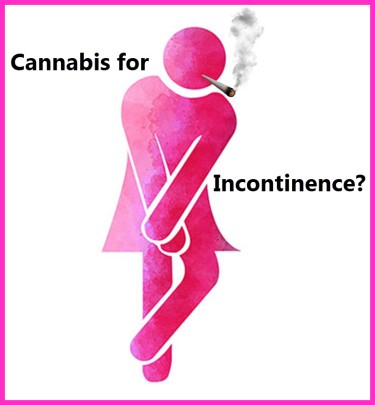Do you use cannabis? And have you noticed that you urinate more frequently than nonusers around you? While these questions might seem strange, a recent study indicates that these two qualities might be interrelated.
Though researchers frequently examine the potential link between cannabis and the bladder, there is still a lot we don't know about the effects of cannabis on our overall body systems and health. A recent study published in the American Journal of Medicine sheds new light on the impact of cannabis use on hyperactive bladders. Ultimately, researchers discovered that marijuana users are more inclined than nonusers to experience these conditions.
Cannabis Use in the United States
Due to recent cannabis legalization, medical and recreational cannabis use is becoming more prevalent in the U.S. As of December 2021, the commercialization of medical cannabis for various health issues has been authorized in 36 U.S. states and the District of Columbia.
Furthermore, marijuana use for recreational purposes is permitted in 19 states. According to recent surveys, 49.6 million Americans above the age of 12 reported consuming cannabis since 2020. Nonetheless, the conflict between marijuana's therapeutic benefits and the associated health issues has made marijuana use contentious.
What is an Overactive Bladder?
The study describes the overactive bladder as a storage-phase condition marked by the urgency with recurrence and nocturia (the impulse to wake up and visit the restroom during the night) without or with urge incontinence, which is lower urinary tract symptoms. Chronic diseases like overactive bladder significantly impact patients' life experience and productivity at work.
According to the authors, previous research has shown that cannabis helps to reduce symptoms of the lower urinary tract, which can create significant health problems. Researchers for the study then examined the relationship between overactive bladders and regular cannabis use as an aspect of common urinary tract symptoms.
Many medications have been created to treat this disease, including 3-adrenergic receptor agonists (mirabegron) and M-choline receptor blockers (solifenacin). These medications were formulated to help enhance patients' quality of life and alleviate symptoms. However, these medications frequently have a certain percentage of adverse effects and limited therapeutic efficacy. This implies that improved pharmacological therapy is still needed.
Due to marijuana's growing acceptance and accessibility, several researchers are examining whether it has the potential to become a brand-new class of drug that is efficient and well-tolerated. A study involving men aged 20 to 59 revealed that chronic cannabis users were much less likely than nonusers to report lower urinary tract symptoms.
But given the similar prevalence of overactive bladder in adults of both sexes, it is still unknown if marijuana helps manage overactive bladder symptoms in the general population.
About the study
Since only these datasets from 2005 to 2018 include inquiries about cannabis use and symptoms of frequent urination, data from seven 2-year cycles of the NHANES were collected. NHANES is a continuous, cross-sectional survey conducted by the Centers for Disease Control and Prevention (CDC) to examine the nutritional health of children and adults in the United States. It combines interviews and physical examinations using a sophisticated, stratified, multistage, clustered quantitative research technique.
For study enrolment, participants between the ages of 20 and 59 completed questionnaires on kidney conditions and drug use. Participants in the study self-reported whether they used marijuana regularly or occasionally during the Mobile Examination Center (MEC) interview. Additionally, data on cannabis usage frequency was gathered using the questionnaire.
The Kidney Conditions-Urology questionnaire was used to evaluate overactive bladder symptoms. The Overactive Bladder Symptom Score (OABSS) survey was used to quantify them. Overactive bladder disorder was deemed present in those with a score of three or higher.
The researchers also collected information on the participant's age, gender, race, annual household income, family income to poverty ratio (FIPR), level of education, and marital status. The subjects' body mass index (BMI), metabolic syndrome, diabetes mellitus, hypertension, and tobacco usage were also examined. Finally, the Chronic Kidney Disease Epidemiology Collaboration (CKD-EPI) equation was used to determine the estimated glomerular filtration rate (eGFR).
Study findings
A sum of 18,736 tests was used to reflect the weighted U.S. population of 123,065,848. Almost 24% of respondents in their lifetime said they had regularly used marijuana. These individuals were more inclined to be younger, slimmer smokers, primarily non-Hispanic white or black single males with low education and poor income.
Compared to nonusers, regular cannabis users reported a higher tendency toward urge incontinence and a higher frequency of nocturia. Furthermore, at all degrees of severity, normal users were more inclined than nonusers to experience signs of an overactive bladder.
When considered as a whole, the current study shows that regular marijuana users were more likely to experience and develop severe overactive bladder problems. Therefore, marijuana usage should be restricted in treating overactive bladder symptoms unless future research demonstrates otherwise, especially in light of the harmful effects of marijuana consumption.
Even though the study found that regular cannabis users were more likely to experience nocturia and OABD, the researchers acknowledged that they are still unsure of why marijuana would have such a marked influence on the bladder.
The study concluded that present data do not corroborate the rationale for using cannabis in the medical treatment of individuals with overactive bladder, particularly given the challenging health issues induced by marijuana. This finding is puzzling and underwhelming, and it may leave readers with more questions than answers—especially in light of earlier studies on the subject.
Conclusion
What, then, is the reality? Could there be other factors that cannabis users share that have additional causal linkages that also play a part? Exists a perfect cannabis composition that improves or worsens the circumstance? Numerous cannabis studies have concluded that more study is the very important next step. It will take some additional research to completely decipher the link between cannabis usage and bladder problems, though there is undoubtedly some correlation.








